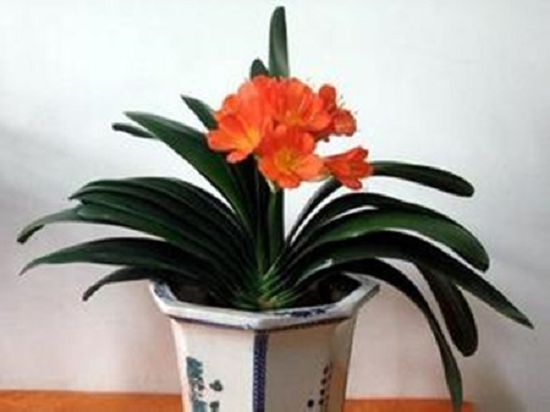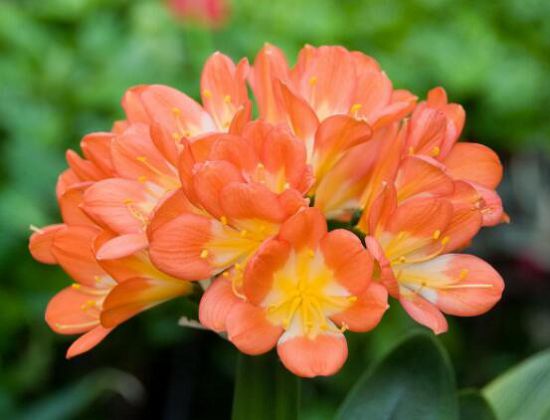The knowledge and main points of Family Care of Gentleman
Cymbidium is suitable for indoor culture, which is mainly determined by its internal structure and physiological function. Magnolia is an evergreen perennial herb with strong shade tolerance and thick, dark green leaves. Mesophyll contains a lot of chlorophyll, which can absorb carbon dioxide and water in sunlight, synthesize organic matter for its own growth and development, and release oxygen at the same time. In addition, the broad and thick leaves of Cymbidium grow many pores and villi, which can secrete a lot of mucus, and in the process of gas exchange, they can absorb a large amount of dust, dust and harmful gases in the room, making the indoor air clean. Therefore, Cymbidium is also known as "absorption machine" and "dust collector", the protector of human health. So how can this healthy patron saint grow and develop healthily in your home? The family maintenance of Magnolia should mainly start from the aspects of temperature and humidity, soil, moisture, light, nutrition and so on.
As the orchid is native to the mountain forests of South Africa, where the natural environment is like spring all the year round, various parts of the organs of the plant have adapted to this lukewarm natural environment. Therefore, in the daily maintenance process, the temperature should be controlled between 15-25 degrees. When the temperature drops below 10 degrees, the growth and development of Magnolia is slow, when it falls below 0 degrees, it will freeze to death. Similarly, when the temperature reaches or exceeds 30 degrees, it will seriously affect the normal growth and development of Magnolia.
Water is an important part of Cymbidium. According to the determination, 60% of the moisture in the orchid body is 80% of the moisture, especially its fleshy roots have a strong water storage function and strong resistance to drought.
Gentleman orchid likes neutral water, clean and pollution-free tap water, well water, river water and so on can be used for watering, but because the water temperature of fresh tap water and well water is lower than the soil temperature and contains some impurities, it should be placed for 1-2 days before use. As for watering, there is also a lot of fastidiousness. The best way for a gentleman's orchid seedling is to spray it with a sprinkler. Spray the nozzle up to the leaf, which has the advantage of not only watering the flowers, but also washing dust, leaving fog beads on the leaf surface to ensure a certain humidity on the leaf surface, and water evaporation in the sun can reduce the leaf surface temperature and prevent sunburn. But the flowering magnolia can not be watered by sprinkler irrigation to waterproof into the leaf sheath resulting in rotten heart, for the flowering magnolia can only be irrigated into the basin. Then when and how much water is appropriate? This mainly depends on the ambient temperature of the magnolia.
The general watering principle is "see wet see dry, do not dry do not water, dry thoroughly". Watering thoroughly is to keep all the roots of the orchid in the same humidity. Judging whether the water is thoroughly watered or not can not be determined only according to whether there is water flowing out from the bottom of the basin. Because sometimes the basin soil hardens and shrinks into a ball after drying, and after watering, water flows quickly from the basin wall to the basin bottom and out from the bottom hole. The central part of the basin soil does not even touch a little water. If you stop watering at this time, it will wilt the leaves of Magnolia and form an arrow when it is running.
A simple and effective watering method is to soak all the flowerpots in a basin or bucket filled with water, soak for half a minute and then take them out. But the disadvantage of doing so is that the nutrients in the soil are relatively easy to lose, so if you want to make the magnolia have deep roots and big leaves, you should also pay attention to replenish it in time. The nutritional elements needed by Magnolia mainly come from organic fertilizers, such as bean cake, peanut cruller, animal offal and so on. Under normal circumstances, it can be applied in spring and autumn within a year. In spring, it was applied once in late April and early May after flowering, and again from mid-September to late October after fruit harvest in autumn.
Magnolia is a humid plant, which requires high humidity of the growing environment. Its most suitable humidity range is 70%, 80%. The magnolia growing in such an environment has green leaves, clear veins, short, wide, neat leaves and high ornamental value. However, due to the limitations of the home environment, it is difficult for ordinary families to meet this standard. This is also the main reason why many people can not raise gentleman orchids well. The sunshine plants of the genus Cymbidium are not strict in light requirements, as long as the temperature is suitable, the light time is longer or shorter can blossom normally, and short-day sunshine in winter and spring is more conducive to flowering. Good lighting is an important condition to ensure the bright color of gentleman orchids. But it still likes the weak light, especially the strong light.
The leaves of Cymbidium have phototaxis, and if they are placed indoors for a long time, the leaves must be deflected in the direction of the sun. As far as its plant shape is concerned, it is difficult to look sideways at a line and look squarely at the ornamental effect of opening a fan.
The arrangement of the gentleman orchid must be in the north-south direction, not in the north-south direction. What if the leaves grow too long? Can pull up the two leaves after clamping up, can be surrounded by a playing card so that it does not hurt the leaves, then the leaves will be corrected in 20 days.
The sturdy fleshy roots of Cymbidium not only store enough water, but also put forward higher requirements for the soil on which they live. Only the nutritious soil with good permeability, loose texture and rich humus is suitable for the growth of fleshy roots of Cymbidium.
The rotten leaves or pine hairs of Cymbidium must be fermented before they can be used. Without fermentation, it is easy to burn the roots. Cymbidium must change the soil once a year.
The time and times of toppling and changing soil of Cymbidium depends on the size and season of the seedlings. Like these grown-up orchids, they have to change their soil once a year. The best time to change soil is in spring and autumn, because the orchid grows vigorously at this time and will not affect the growth of the plant. Take out the magnolia from the basin, cut off the rotten roots and the old roots without absorptive capacity, and remove the waste soil. Cover the drainage hole of the flowerpot with broken pieces, fill it with 2-5 cm thick nutritious soil, grab a handful of soil to add to the inside of the root, and then put the plant in the pot. When filling the nutrient soil into the pot to half the height of the pot, gently press down with your hand along the edge of the pot, so that the roots stand in the basin and are not easy to bend. The key point of soil replacement is to fill the roots with soil. Otherwise, there is no soil in the root, water and nutrients can not reach the root, which is easy to cause rotten root and arrow entrapment. After changing the nutritious soil, pour water thoroughly.
In fact, in the final analysis, the maintenance knowledge of gentleman orchid is far more than these, and a lot of maintenance knowledge also depends on orchid farmers to explore and accumulate in practice. But you don't have to worry, because many orchids enthusiasts also know that it is difficult to raise a good orchid, but it is not easy to raise it, although this is a joke, but it also shows on the other hand that the orchid is not so delicate. As long as you do more work and pay more attention in ordinary times, you will certainly be able to cultivate a gentleman orchid with luxuriant leaves and bright flowers, and life can naturally add some beauty and fun.
Related
- Is the orchid suitable for indoor use? Is it good for the body?
- How to prevent the empty root of orchids?
- What to do after the crab claw orchid is withered?
- Why are the leaves of orchids always yellow? Fertilizing and watering.
- Can the root of the gentleman orchid be saved if it is rotten?
- Diagnosis and treatment of cotton-blowing beetle insects in Cymbidium
- There is a way for a gentleman's orchid to rot.
- What is the most suitable temperature and humidity for the orchid?
- How to raise a gentleman's orchid? Cultivation techniques of Cymbidium
- How to prepare the nutritive soil for the cultivation of Cymbidium



